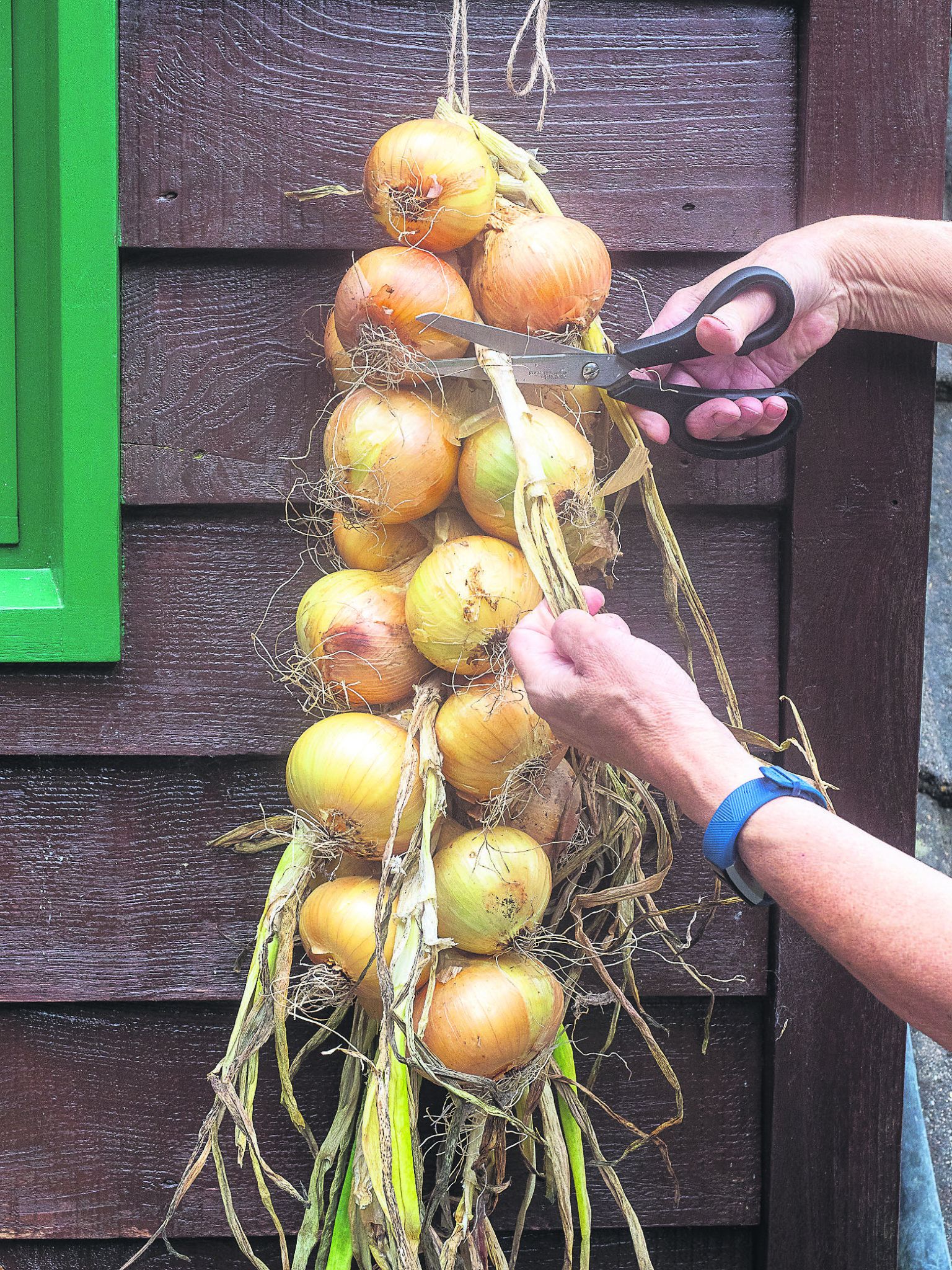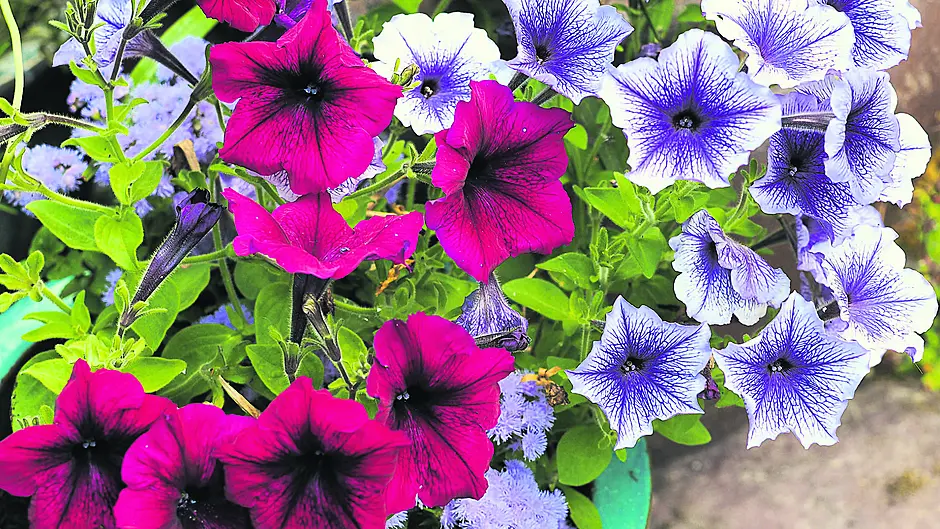BY JOYCE RUSSELL
IT seems that hit and miss summers are the current way of things. We may or may not get a long spell of dry weather and we will certainly get plenty of rain. It’s warmer than it used to be for a long stretch of time and warm wet conditions place different stresses on the garden. The main thing is not to let those stresses make the gardener too stressed!
We do the best that we can as gardeners and each year some plants will love the weather and perform at their best. It may be that different plants do this in the year before, and other ones again in the one after, but all we can do is work with what we are sent.
One thing last year taught me is to avoid previously acceptable, and now over-wet, areas of the garden for winter plantings. The stress on the plants will be too great to allow them to perform at their best.
Climbing French Beans
This seems to be a particularly good year for beans in the garden. I’ve just cleared my last row of broad beans and am enjoying the bountiful supply of climbing French ones. Fortunately the glut coincides with plenty of ripe tomatoes – I like to make a hot spicy mix for the freezer using these two main ingredients along with onions and garlic. This concentrated mix takes up less room in the freezer than a bulky bean stew. The dish can be stretched further, and the chilli diluted, by adding in a can of beans of your choice when heating and serving.
I prefer climbing French beans to runner beans, although the latter are a little easier to grow. If your beans curl into a C shape when growing, it’s probably due to inconsistent watering. Try to maintain an even soil dampness in order to maximise bean set and to keep pods straight. If pods curl further than a C it may be because of a mineral shortage so use a balanced liquid feed to help avoid this.
Onions
If you have lifted your onions and laid them out to dry in an airy shed, you still need to keep an eye on progress. The stems might not dry in persistent damp weather and if there are any bulbs showing signs of mould, this can spread to others that touch against them. Take a close look and remove any problem plants. And if drying is stalled, it’s worth spreading the crop out in a dry room in the house.
 String onions for storage.
String onions for storage.
The aim is to make sure stems and necks are dry before you plait them into ropes, or wind them around strings to hang up. Although, having said this, an onion with a slightly soft neck is more likely to dry once the neck is constricted between strings. Plants with persistent soft necks should be used first – they won’t keep as long as fully dried ones.
A time of plenty
Harvesting can take a lot of time, but it is always important to keep on top of this activity. For many plants, the more you pick, the more they will produce, so don’t be tempted to leave those dainty courgettes to turn into lurking marrows.
One of my favourite treats is at its best now. Homegrown sweetcorn is a big deal in our family. I grow it in the polytunnel and it comes ready to harvest over a couple of weeks in August. The family travel to partake in a feast and we all agree that it is one of the best things to eat. Pick plump cobs, with brown tassels, just before you want to eat them. Boil the peeled cobs in water for four minutes only. Drain and serve with plenty of butter, salt and pepper and savour the moment. The taste is so much better than anything you will buy in a shop.
Plants do take up space in the polytunnel, but you can plant spinach, winter lettuce or spring cabbage to reuse the space once the corn is lifted.
Keep petunias going
This showy plant is a favourite for window boxes and containers. It isn’t hard to grow and there are plenty of trailing plants available, in a range of colours, to buy in the spring. Most plants will grow well and need little attention, but there are a few things you can do to keep plants looking good.
• Remove dead flowers regularly – this is a sticky job so remove all that have faded at one time, rather than grabbing a few off as you pass by.
• Keep soil damp – petunias produce a large bulk of foliage and flowers and compost dries fast in a small container; you may need to water every day.
• Protect from cold winds – a sheltered position keeps plants flowering for much longer.








